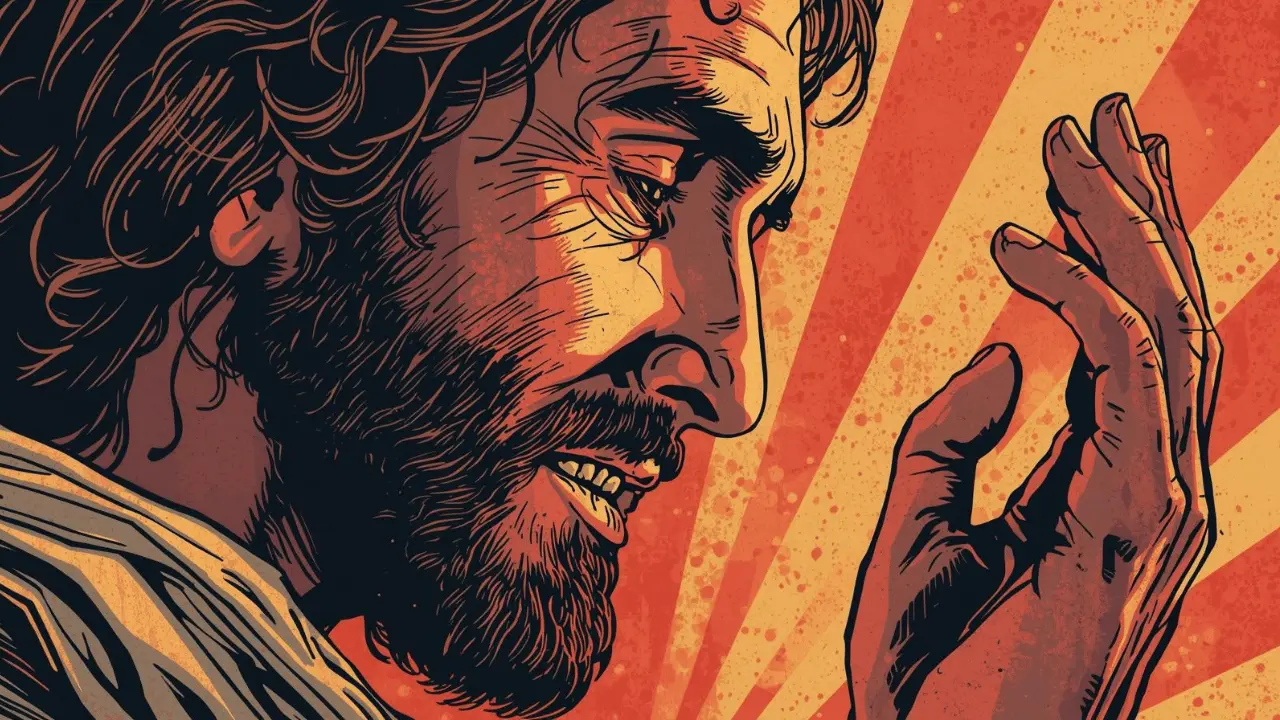When Faith Meets Divine Power
The miracles of Jesus stand among the most inspiring stories in all of Scripture. Each one reveals something unique about His divine nature — His compassion, authority, and purpose on earth.
The second miracle recorded in the Gospel of John is a beautiful illustration of faith growing from desperation to deep trust. It’s the story of a father’s love, a dying child, and the power of Jesus’ spoken word.
This miracle — the healing of the nobleman’s son — took place in Cana of Galilee, the same town where Jesus performed His first miracle of turning water into wine. But this time, the miracle wasn’t about transformation; it was about trust.
Setting the Scene: Cana of Galilee Once Again
Returning to the Site of His First Miracle
Cana, a humble village in Galilee, wasn’t known for its size or prominence. Yet it became the setting for two of Jesus’ earliest and most meaningful miracles. His return there signalled a continuation of His public ministry — revealing not just His power, but His mission to bring faith and life wherever He went.
A Father’s Desperation
In nearby Capernaum, about 20 miles away, a nobleman faced every parent’s nightmare. His young son was gravely ill, and despite his position and resources, nothing could save him. When the man heard about Jesus’ miracles, hope sparked within him.
The Encounter: A Plea for a Dying Child

A Cry from the Heart
When the nobleman finally found Jesus, he didn’t approach as an official or a man of status — he came as a father in pain:
“Sir, come down before my child dies.” (John 4:49)
This wasn’t a rehearsed request but the heartfelt cry of someone desperate for help. It echoes the universal prayer of every suffering soul: “Lord, please help.”
Jesus’ Reply: Faith Beyond Sight
Jesus answered in a way that both tested and strengthened the man’s faith:
“Go; your son lives.” (John 4:50)
There were no gestures, no dramatic signs — only words. And the nobleman believed those words. He turned and began the journey home — a simple yet extraordinary act of faith.
The Miracle: Healing at a Distance
A Servant’s News
On his way home, the nobleman’s servants met him with life-changing news: his son was alive and completely healed. When he asked when the fever left, they replied,
“Yesterday at the seventh hour the fever left him.”
It was the exact moment Jesus had spoken: “Your son lives.”
Faith Confirmed, Family Transformed
John’s Gospel records:
“So the father knew that it was at the same hour in which Jesus said unto him, ‘Thy son liveth’: and himself believed, and his whole house.” (John 4:53)
One man’s faith became the seed of belief for an entire household.
Historical and Cultural Context
Who Was the Nobleman?
The word nobleman (Greek: basilikos) refers to a royal official, likely serving under Herod Antipas, ruler of Galilee. Despite his influence and wealth, he stood powerless before his son’s illness — a reminder that suffering touches every life, regardless of status.
The Journey Between Capernaum and Cana
Capernaum, by the Sea of Galilee, lay about 20 miles from Cana in the hills — roughly a full day’s walk. The nobleman likely arrived by afternoon and stayed the night before returning home.
The Message Within the Miracle

Faith That Believes Before Seeing
True faith believes before it sees. The nobleman didn’t wait for confirmation; he trusted Jesus’ word and acted upon it. His faith foreshadows Jesus’ later words to Thomas:
“Blessed are they that have not seen, and yet have believed.” (John 20:29)
The Power of the Word
Unlike miracles performed by touch or presence, this one happened through a simple spoken command. It revealed that Jesus’ authority transcends distance — His word alone carries life, healing, and creation itself.
The Comparison: First and Second Miracles
| Aspect | First Miracle (Water into Wine) | Second Miracle (Healing the Nobleman’s Son) |
|---|---|---|
| Location | Cana of Galilee | Cana of Galilee |
| Type of Miracle | Transformation (physical) | Restoration (healing) |
| Demonstrates | Jesus’ creative power | Jesus’ authority over illness and distance |
| Human Response | Joy at a wedding | Faith amid crisis |
| Spiritual Message | Jesus brings abundance | Jesus rewards trust |
Symbolic Meaning
From Physical Healing to Spiritual Faith
This miracle shows how faith often begins in physical need — through pain, loss, or crisis — but matures into spiritual trust. The nobleman came seeking healing for his son, but left with faith in Christ Himself.
Distance and the Divine
The miracle’s “long-distance” nature reminds us that God’s power is never limited by space or circumstance. Even today, His word reaches across miles and hearts, bringing peace and healing where it’s needed most.
Lessons for Modern Believers
- Faith Begins with a Need — Many times, our deepest faith is born in desperation. Like the nobleman, our pain can lead us to God’s presence.
- God’s Word Is Enough — The nobleman had no proof, just a promise. Faith flourishes when it rests solely on God’s word, not on visible signs.
- Our Faith Can Influence Others — One man’s belief brought salvation to his entire family. True faith is contagious; it spreads hope.
Miracles as Signs
In John’s Gospel, Jesus’ miracles are described as “signs” — not just wonders, but revelations of His divine identity.
“These are written, that you might believe that Jesus is the Christ, the Son of God; and that believing you might have life through His name.” (John 20:31)
The healing of the nobleman’s son was more than compassion — it was a sign pointing to who Jesus truly is.
Faith That Grows Over Time
The nobleman’s journey reflects how faith develops: from a need, to belief, to a living relationship.
At first, he believed Jesus could heal if He came. Then, he believed in Jesus’ word alone. Finally, he and his household believed in Jesus Himself. This same growth often mirrors our own faith journeys.
Why This Miracle Still Matters Today
Even after two millennia, this story still speaks to us. In a world that constantly seeks proof, Jesus’ second miracle reminds us that faith rests on trust, not evidence.
When we face sickness, uncertainty, or distance, God’s word still carries the same power it did in Cana. His promises remain steadfast and alive.
The Miracle’s Relevance to Modern Christianity
At its heart, this story captures the essence of Christian belief: trusting Jesus’ word above all else. Churches and believers alike draw strength from this example of faith that listens, obeys, and rests in divine assurance.
In seasons of waiting or uncertainty, the nobleman’s story gently reminds us — faith begins when we take Jesus at His word.
For more on how God reveals His power through time and darkness, visit The Three Hours of Darkness: Meaning, Bible Verses, and the Power of the 3rd Hour.
Faith That Believes the Word
The story of the nobleman’s son is more than a record of healing; it’s a timeless invitation to trust. It reminds us that faith isn’t built on sight, but on confidence in God’s word.
Just as the nobleman walked home in quiet faith and found his son alive, we too can walk forward trusting that when Jesus speaks, His promises never fail.

